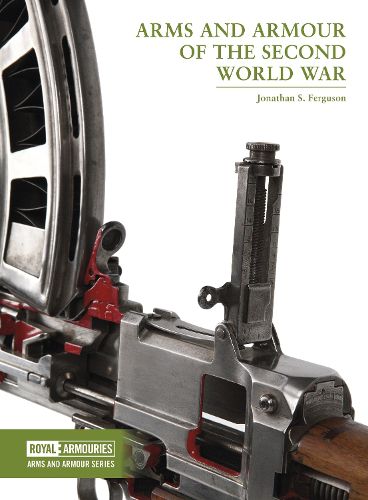Readings Newsletter
Become a Readings Member to make your shopping experience even easier.
Sign in or sign up for free!
You’re not far away from qualifying for FREE standard shipping within Australia
You’ve qualified for FREE standard shipping within Australia
The cart is loading…






The Second World War was the single most important event of the 20th century. It changed the world forever, establishing the importance of aircraft and armoured vehicles whilst quick-firing artillery remained king of the battlefield. Yet, as with all conflicts before and after it, the war on the ground was fought by infantry engaging in countless firefights for which portable weapons were essential.
Inspired by the Royal Armouries' Second World War exhibits, Jonathan Ferguson charts the differing approaches taken to modernise small arms, associated training, and industrial infrastructure from the 1930s to the end of the war in 1945. It takes a British perspective but covers arms from Britain, Germany, the Soviet Union, Japan and the United States. It places into tactical context the most iconic firearms of the conflict-the Bren and MG42 machine guns, the M1 Garand rifle, the Sten submachine gun and many more. Why were so many different types in use? Who used them, and for what purpose? What was their legacy?
$9.00 standard shipping within Australia
FREE standard shipping within Australia for orders over $100.00
Express & International shipping calculated at checkout
The Second World War was the single most important event of the 20th century. It changed the world forever, establishing the importance of aircraft and armoured vehicles whilst quick-firing artillery remained king of the battlefield. Yet, as with all conflicts before and after it, the war on the ground was fought by infantry engaging in countless firefights for which portable weapons were essential.
Inspired by the Royal Armouries' Second World War exhibits, Jonathan Ferguson charts the differing approaches taken to modernise small arms, associated training, and industrial infrastructure from the 1930s to the end of the war in 1945. It takes a British perspective but covers arms from Britain, Germany, the Soviet Union, Japan and the United States. It places into tactical context the most iconic firearms of the conflict-the Bren and MG42 machine guns, the M1 Garand rifle, the Sten submachine gun and many more. Why were so many different types in use? Who used them, and for what purpose? What was their legacy?